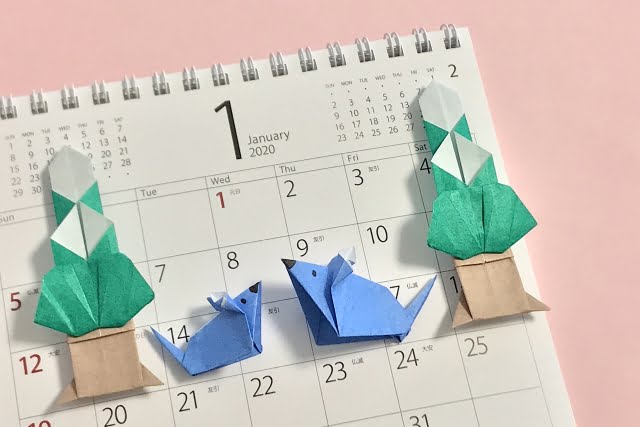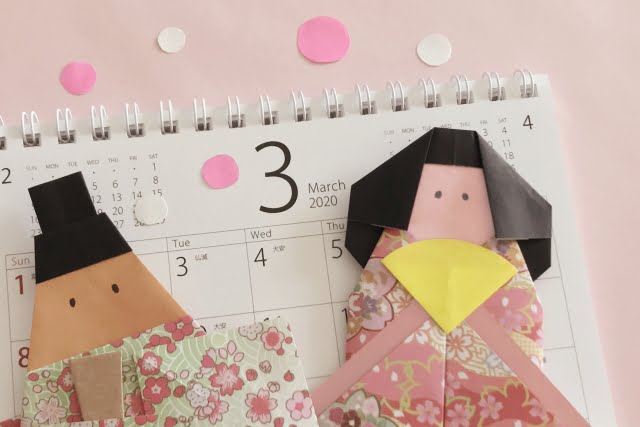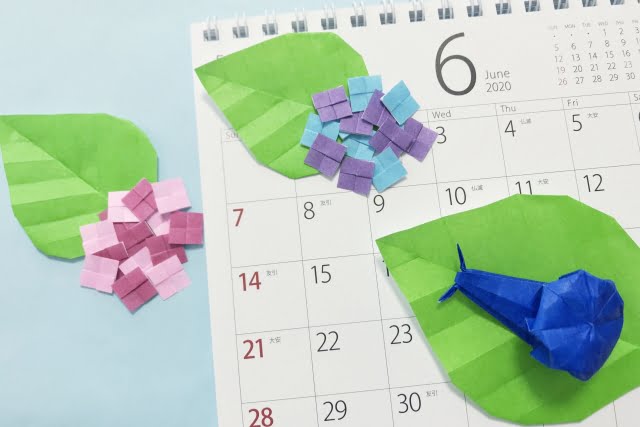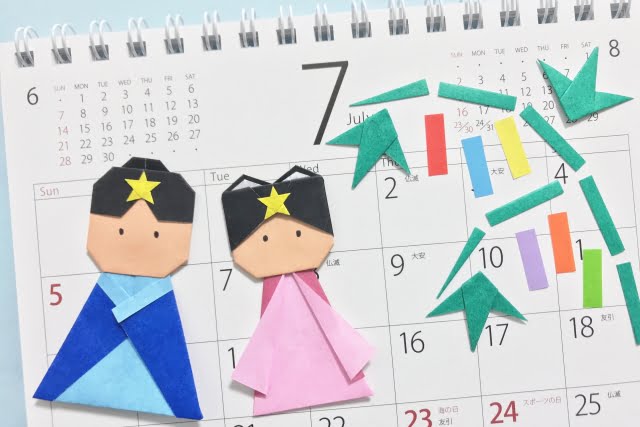Japan is a country that loves “beauty”. For the ordinary red, yellow and blue, they have such names as “akane”, “yamabuki” and “ruri”, and for rain, they have such names as “yubari”, “aki-rin” and so on according to the time of year and the degree of rainfall. For such a country that loves beauty, it would be too boring to just sort the months by numbers. Then do you know what aliases there are for the months in Japanese?
January: Mutsuki(睦月)

January is the beginning of the New Year for Japan. In this month, relatives start to gather together because of the New Year. So January is a month of mutual interaction and harmony, hence the name Mutsuki.
In addition, there are also names such as “gangetsu(元月)” (the initial month) and “moyutsuki(萌月)” (the month when grass sprouts). But they are not as common as the month of Mutsuki.
February: Kisaragi(如月)

The alias for February is Kisaragi. The word “Kisaragi” comes directly from the Chinese name for February, and is pronounced “kisaragi” in Japanese. In Japanese, it means the month to wear more clothes. Although it is spring in February, the temperature is not high, and sometimes it snows. This is the time to wear more clothes to keep warm. This is probably the earnest advice of the ancient people.
Japan Pocket Wifi Rental
UNLIMTED DATA SIM CARD
Japan Travel Prepaid SIM card
March: Yayoi(弥生)

The alias for March is pronounced “Yayoi” and is used by many mothers to name their baby girls. The origin of the word is 「木草弥や生ひ月」, which refers to the month when the trees and grass finally begin to grow in abundance, a glorious and prosperous scene of spring. The mothers who used this word to name their daughters probably wanted their daughters to be as delicate and vigorous as the plants in spring.
Other names are much more straightforward. Hanazuki, Hanamizuki, Sakurazuki, Kurenai, etc.
April: Uzuki(卯月)

The origin of the month of Uzuki is commonly referred to as April, the month when the crystal flower (Ubana) opens. Another way to say it is that April is also called the month of 卯, because 卯 is the fourth of the twelve Earthly Branches.
April is a very important month for Japan. It is a month of “beginnings” when schools start and companies start hiring new employees. The US, China, and Korea all start their fiscal years in January, while the academic year starts in September in the US and China, and March in Korea. So why is Japan the only country that starts its fiscal year and school year in April?
This definition of “year” started early, but the rule that the “year” starts in April was set in 1886, the 19th year of the Meiji era. It is said that in the Edo period, Japanese taxes were paid in rice, but from the Meiji period onward, they were paid in cash. It took four months for the state to process the accounts from harvesting rice to converting it into money and then paying it. So, if you start at the end of December of the previous year, everything is finished from April and the new fiscal year begins.
May: Satsuki(皐月)

Like March, May(Satsuki) is often used as a person’s name. In ancient times, the month of May was often the month when rice seedlings were newly planted, so the three sounds “Satsuki” were taken from “Sanahetsuki(referring to the month when rice seedlings were newly planted)” and used as an alias for May.
The Chinese character 皐 is from the Chinese dictionary, according to the oldest Chinese monolingual dictionary “Erya”, in ancient China, each of the 12 months is called by its own name, and May is called “皋”, which is also the original character of the current Japanese Chinese character “皐”.
In addition, since Satsuki is also the name of a kind of flower, May is also called “calamus month (Ayamezuki, ayame is a name of a flower)”.
June: Minazuki(水無月)

The alias for June is interesting. The Chinese characters seem to say “a month without water(水 means water, 無 means no, 月 means month)”, but in fact, the “無” in “水無月” plays the role of the Japanese word “の” here. So the meaning of Mizutsuki is actually a month with water. It means that the big work of this month is to bring water to the fields so that the crops can grow strong.
July: Fumizuki(文月)

It is said that July is called Bunraku because people write poems and books in the night breeze on the Tanabata Festival in July. However, it has been proven that the Tanabata Festival was a custom that was passed down from China to Japan during the Nara period, not an ancient Japanese custom, so it is likely that name Fumizuki did not originate there.
The Japanese pronunciation of Fumizuki is “ふみづき”, which is similar to the sound of “含み月”, so it has been suggested that July is the month when the rice ears are contained, or perhaps that is how it got its name.
August: Hazuki(葉月)

The origin of the Hazuki is simple: in August, the leaves fall one after another, hence the name “Hazuki(leafy moon)”.
But August has some other beautiful aliases.
For example, in the month when the ears of rice are full: “Hohari-zuki”, in the month when the geese come for the first time: “Hatsuki-zuki”, in the month when typhoons occur frequently in the south: “Haezuki”, etc.
September: Nagatsuki(長月)

September is called Nagatsuki because from this month onward, the hours of darkness become longer than the hours of daylight. This is why it is called “Nagatsuki” after the word “Yonagazuki(the month that night is long )”.
In Japan, there are generally two days of observance in September. The third Monday of every September is called the Day of Respect for the Elderly, and there is also an Autumnal Equinox Day near September 23 every year. If the timing is right, the two days can be combined to make a long holiday. For example, in September 2020, the 19th and 20th of the weekend, the 21st of Monday will be the day of respect for the elderly, and the 22nd of Tuesday will be the day of the autumnal equinox, totaling four consecutive holidays.
October:Kannazuki(神無月)・Kamiarizuki(神在月)

October is a very interesting month. According to legend, there are eight million gods in Japan, spread out in every corner of the country. These gods usually protect their own people in their own acres and acres of land. However, every year, at a certain time in October, millions of gods from all over the country would gather in Izumo-kuni (now the eastern part of Shimane Prefecture) for a meeting to discuss the plans for the next year. At this time, there were no gods anywhere else in the country except Izumo, so October was called “the month without gods”, which is now called Kannazuki.
Accordingly, in Izumo, where God is present in October, this month is called “the month of God’s presence”, i.e., Kamiarizuki.
November: Shimotsuki(霜月)

In November, the temperature starts to get cold and frost falls in the morning and evening, hence the name Shimotsuki(Frost Month). Likewise, because November is on the borderline between fall and winter, it is also called Yukimachizuki, which means the month of waiting for snow.
November is also known as “the month of the return of the gods”, following the legend of October, when all the gods returned to their hometowns after their meetings.
December: Shiwasu(師走)

Finally, the last month has come. There is no precise etymology for why December is called the month of Shiwasu, but it is generally accepted that in December the monks (“shi” in Japanese) are busy running around giving away sutras, hence the name “Shiwasu” month.
These are the names of the twelve months in Japan. Does it increase your interest in Japanese culture a little bit? We look forward to your thoughts!

GetAround Japan is your number one travel guide, providing the latest information on visiting and living in Japan, with tips on what to eat, things to do, and places to stay.
Whether you’re planning for a trip far in the future, or already in Japan in need of some fresh ideas, our archive of posts will help you find the best way to fill your time and get the most out of your travel experience.
We provide you updates on serious policies that affect visitors and foreign residents while also keeping things light and fun with articles on quirky trends and pop culture.
How do we know how to provide visitors the information they need? Our affiliate company CDJapan Rental provides WIFI and Sim Card rentals to thousands of visitors to Japan every year. In other words, we are constantly in touch with and listening to the voices of our customers, and infuse our blog with the information they ask us for.
For inquiries, contact us here
=Company Information=
CDJapan Rental (Neowing Corporation) 1-10-15-3F Nihonbashi Horidome Chuo, Tokyo 103-0012, Japan
Japan Pocket Wifi Rental
UNLIMTED DATA SIM CARD
Japan Travel Prepaid SIM card




